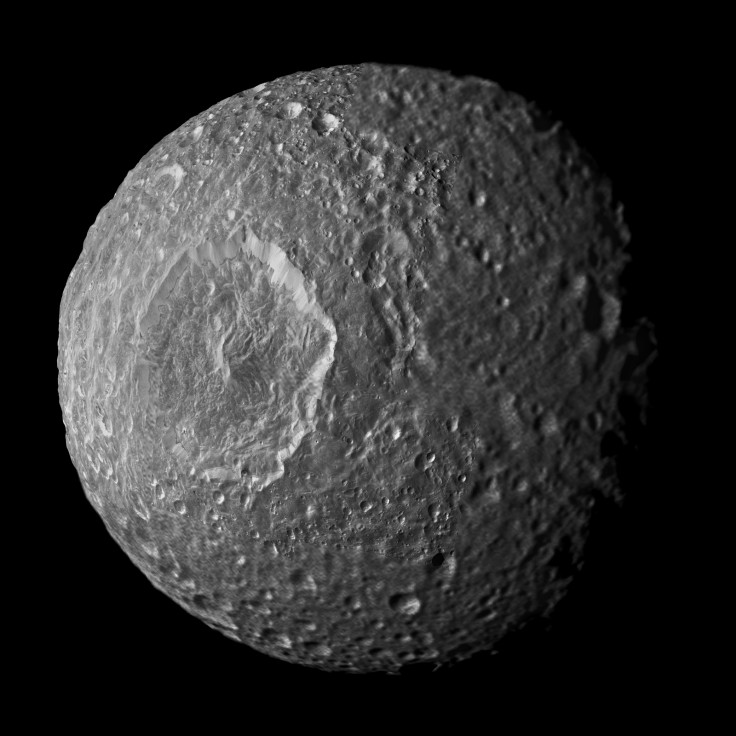Saturn's Moon Mimas May Hold Ocean of Life-Friendly Water Beneath Crust, Says Study

The measurements of the wobbles of Saturn's moon Mimas has led scientists to infer the existence of a possible internal global ocean located beneath an icy crust.
With the presence of water comes the possibility of life-forms. Several moons of Jupiter and two other moons of Saturn, Enceladus and Titan, are also believed to host oceans.
As the satellite wobbles around its axis, astronomers used instruments onboard Cassini spacecraft to measure the movement.
Cassini photographs of Mimas taken at different times and from various vantage points were used to build precise 3-D computer models of the locations of hundreds of surface reference points.
From these, they noticed that the satellite didn't rotate smoothly but rocked back and forth a bit as well.
The back-and-forth wobble should produce about three kilometres of surface displacement but what was seen was an unexpected six kilometres of surface displacement.
This meant that the interior of Mimas is not uniform. The measured wobbles can only be produced if the moon contains a weirdly shaped, rocky core or if a sub-surface ocean exists beneath its icy shell, the team wrote in Science.
"If Mimas does have an ocean, this would definitely be another interesting body in the solar system to be added to list of potential 'life-friendly' environments," Radwan Tajeddine, research associate in Cornell University's astronomy department and lead author of the study, told Reuters.
If the ocean exists it lies 24 to 31 kilometres beneath the moon's impact-battered surface. Being small and just 396 km wide, Mimas is too small to have retained any internal heat from its formation.
So some other source of energy would be required to maintain an underground ocean.
Gravitational tugging by Saturn as the moon circles closer and then farther away from the planet could cause enough tidal heating to sustain an ocean, the researchers explain.
The other idea is that Mimas has an elongated core forced into the oblong shape by gravitational forces from the planet during its formation.
The odd-shaped core would favour gravitational flattening by nearby Saturn. The moon's relatively smooth and roughly spherical icy surface covers up whatever is underneath.
© Copyright IBTimes 2024. All rights reserved.





